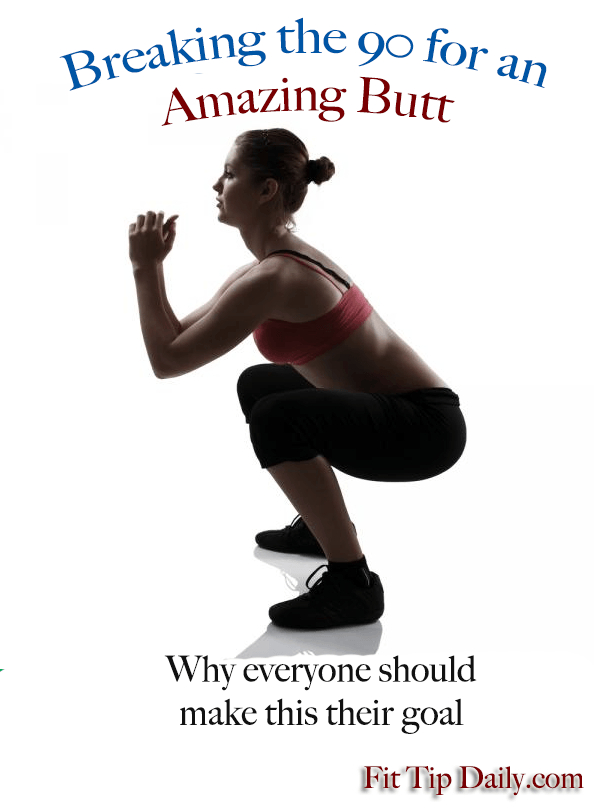So what does breaking the 90 really mean?? The 90 refers to, 90 degrees. This 90 degrees happens while squatting. You may have heard lifters shout it at the gym “come on, break the 90!” In pervious years, I didn’t think it was such a big deal. I definitely didn’t think that breaking it was a necessity. Then, one day I noticed that my butt wasn’t the way I wanted it to be. In particular, the bottom portion (lower half) of my butt. I started testing different exercises to see which exercises induced contractions in that area (along with foam rolling to make sure it wasn’t too tight). This saddle bag area and the bottom of my butt seemed to respond the best when I did deep squats and “broke the 90.” To test this theory I continued to push myself, not with weight but with the depth of the squat. Of course, you must maintain proper form. The minute my form broke I backed off. Bad form leads to injury so always keep that in mind! As the weeks passed I saw the changes in my glutes. To increase the results even further, I added in the step mill ( a definite butt aid).
So why doesn’t everyone break the 90??
Some simply can’t. If your quads are too tight because of a desk job or seated occupation then you main goal right now should be to restore flexibility first! If you can do a squat but not quite that low, do what you can. Then add in a flexibility routine as well as a foam rolling routine for your hips and thighs. As your flexibility increases, so too can the depth of your squats.
Is Squatting this low bad for your knees?
Its only bad if you
A.) Have bad form OR
B.) Don’t have the flexibility
The myth was that anything over 90 was bad for your knees. However, this seems to have been a blanket statement established back in 1961
by Dr. Karl Klein at the University of Texas. Dr. Klein determined that a group of competitive weightlifters displayed greater laxity at the knee joint than a group of non-lifters, and issued a blanket recommendation against squatting below parallel. The study was of very low quality, though, and Dr. Klein was seeking to validate his bias against squatting below parallel. Somehow, this erroneous belief was adopted by the general population and has remained standard dogma ever since, even though it’s been disproven many times over.
Powerlifters squatting double their body weight, to depths of 130 degrees of knee flexion, have been shown in studies to have more stable knee joints than individuals who do not squat. In fact, separate studies have revealed that the knees of those who regularly squat deep are more stable than distance runners and basketball players! In one study of female volleyball players, researchers concluded that there was no statistically significant increase in peak forces at the knee when squatting to depths of 70, 90, and 110 degrees of knee flexion (source)
Fitness Tip: If you only do half the squat you only get half the benefit. This means that you could potentially be creating muscle that set their own limits based on the way you train them. You can’t expect to get a full, round, defined butt with half of a squat.
What does breaking the 90 look like?
If you are serious about your body and you know that having a great butt is your goal. Then try working your way to a deeper squat. Squats always pay off in the long run both in calorie burning and muscle definition. Breaking the 90 could be the key to getting you the butt you’ve always wanted but haven’t been able to attain.
Adria



Leave a Reply